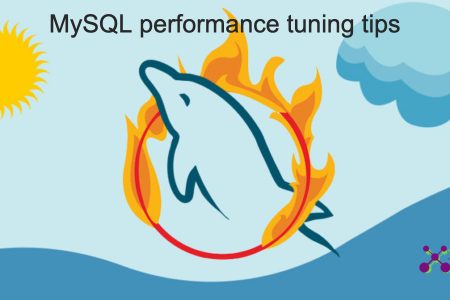InnoDB performance
There are hundreds of settings that can be placed in my.cnf. For the ‘lite’ user of MySQL, they won’t matter as
much.
Once your database becomes non-trivial, it is advisable to set the following parameters:
innodb_buffer_pool_size
This should be set to about 70% of available RAM (if you have at least 4GB of RAM; a smaller percentage if you have
a tiny VM or antique machine). The setting controls the amount of cache used by the InnoDB ENGINE. Hence, it is
very important for performance of InnoDB.
Parameter to allow huge data to insert
If you need to store images or videos in the column then we need to change the value as needed by your
application
max_allowed_packet = 10M
where,
M is Mb, G in Gb, K in Kb
Increase the string limit for group_concat
group_concat is used to concatenate non-null values in a group. The maximum length of the resulting string can be
set using the group_concat_max_len option:
SET [GLOBAL | SESSION] group_concat_max_len = val;
Setting the GLOBAL variable will ensure a permanent change, whereas setting the SESSION variable will set the value
for the current session.
Minimal InnoDB configuration
This is a bare minimum setup for MySQL servers using InnoDB tables. Using InnoDB, query cache is not required.
Reclaim disk space when a table or database is DROPed. If you’re using SSDs, flushing is a redundant operation
(SDDs are not sequential).
default_storage_engine = InnoDB
query_cache_type = 0
innodb_file_per_table = 1
innodb_flush_neighbors = 0
Concurrency
Make sure we can create more than than the default 4 threads by setting innodb_thread_concurrency to infinity
(0); this lets InnoDB decide based on optimal execution.
innodb_thread_concurrency = 0
innodb_read_io_threads = 64
innodb_write_io_threads = 64
Hard drive utilization
Set the capacity (normal load) and capacity_max (absolute maximum) of IOPS for MySQL. The default of 200 is fine for HDDs, but these days, with SSDs capable of thousands of IOPS, you are likely to want to adjust this number.
There are many tests you can run to determine IOPS. The values above should be nearly that limit if you are running a dedicated MySQL server. If you are running any other services on the same machine, you should apportion as
appropriate.
innodb_io_capacity = 2500
innodb_io_capacity_max = 3000
RAM utilization
Set the RAM available to MySQL. Whilst the rule of thumb is 70-80%, this really depends on whether or not your instance is dedicated to MySQL, and how much RAM is available. Don’t waste RAM (i.e. resources) if you have a lot available.
innodb_buffer_pool_size = 10G
